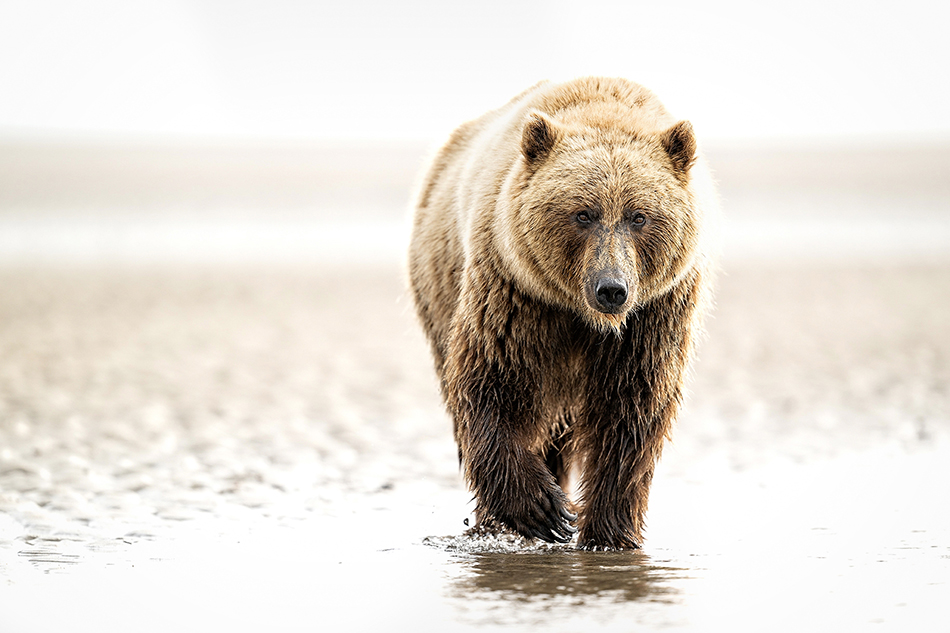
I had a great question recently from a workshop participant. Their question was this…they are taking a bear photography workshop this summer, and wondered what lens to bring….a 400mm F5.6 or a 400mm F2.8? They also wondered how far backgrounds were relative to the bears, and if they needed to bring a F2.8 lens to help blur backgrounds. I replied that backgrounds were generally pretty far behind the bears, but F2.8 wasn’t just about blurring the background, it was also about blurring the foreground. I like to think of it as foreground bokeh, and how it creates mood in an image.
Bokeh (how do you pronounce it?!) by definition is the blur quality of the background. Lens reviews talk about bokeh balls (circles of light), what shape they are, and if the bokeh is pleasing with a certain lens. Photographers pay a lot of money for 50mm F1.2 and 135mm F1.8 lenses, much in part because of the beautiful bokeh these lenses create. With big telephotos we want nice soft pleasing bokeh to separate our subject from the background.

But I consider foregrounds as much as backgrounds when it comes to deciding on what lens to bring. I like to photograph close to the ground for many of my wildlife images, this perspective gives an intimate view of your subject. Being closer to the ground results in foreground blur, and this is where foreground bokeh comes into play. Take a look at this image above of a bear at sunrise. The foreground is critical to the success of the shot. I shot this image using a 400mm F2.8 at F2.8 on a full frame sensor. Others standing beside me also shot a similar image at F5.6. And guess what…the images at F5.6 have sharper bokeh balls, making this image much more busy. Aperture creates mood in images, and the F2.8 foreground is critical to the success of the shot. This image isn’t about background at all, it is all about the quality of the foreground. The ethereal feel comes from soft bokeh circles created using a wide open aperture. F2.8 creates a slice of acuity at the bear, and the background and foreground float into space.

There are other things to consider with this question. A 400mm F2.8 is much heavier, and may not be a good choice for the photographer. You don’t want to miss shots trying to get your lens in position. Also, a 400mm F2.8 is very expensive and might not be practical to buy unless you shoot wildlife all the time. And you can also try to alter foreground blur in post production using the Lens Blur filter.
Whatever lens you use, just remember this. We want to create evocative images, photographs that move and engage the viewer. It is easy to point and shoot, and the shot might be nice. But for me I want to use all the tools available and create something way beyond a snapshot. Think visually, apply your camera craft, and don’t forget to consider foreground bokeh.